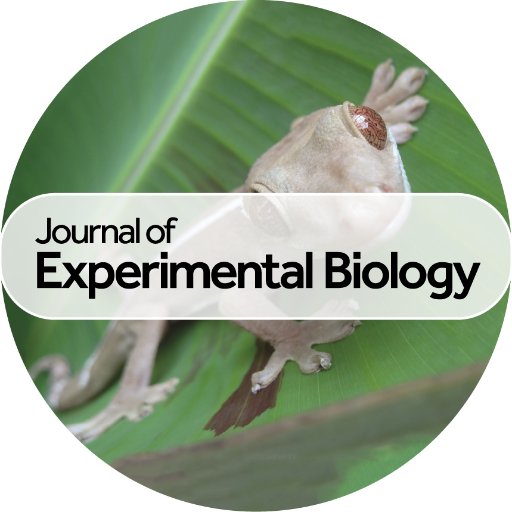
Mike Logan
@EvoLoganLab
Followers
1K
Following
1K
Media
51
Statuses
1K
Associate Professor at the University of Nevada, Reno and Research Associate @stri_panama. My lab studies ecology and evolution in changing environments.
Reno, NV, USA
Joined October 2019
Played around with our lab’s new IR camera, yesterday. Two lizards, a desert horned lizard (Phrynosoma platyrhinos) and a desert spiny lizard (Sceloporus magister), with very different surface temps relative to their environment despite pics taken at similar time of day.
7
4
105
In our new paper in @J_Exp_Biol, we show that anoles whose parasites have been experimentally removed gain heat tolerance. We also looked at hundreds of lizards caught in the field and found that higher parasitism = lower heat tolerance. https://t.co/OiQ2q4wqjE
0
2
13
Are you looking for a PhD position and want to spend your summers in the Rocky Mountains? My lab @CUDenver is looking for 1 PhD student to work on a NSF-funded project to study elevational range shifts in Colorado! Apply by Nov 1! Details here
docs.google.com
The Moore lab at the University of Colorado Denver is searching for 1 Ph.D. student to study the elevational limits of dragonflies in Colorado (http://moore-evo-eco.weebly.com). This position is...
0
16
18
It was fun to do the Heredity Podcast on our recent paper that revealed the inheritance pattern and likely gene underlying a dewlap polymorphism in the Panamanian slender anole:
0
1
3
@MethodsEcolEvol We created this method because a straightforward way to quantify spatially explicit, biologically relevant thermal environments at fine spatiotemporal scales did not previously exist.
0
0
1
@MethodsEcolEvol We show in the paper that you don't need that many OTMs (<20) or drone flights (3ish) to build a very accurate map of the thermal environment at your field site, even in structurally complex habitats.
0
0
0
Our new paper in @MethodsEcolEvol presents a method (and R package) that extrapolates OTM data to the landscape at high resolution with the help of an IR drone. Build detailed operative thermal maps for any day/time that loggers were deployed! (more below) https://t.co/jpJJuz1XVG
besjournals.onlinelibrary.wiley.com
The accurate quantification of thermal environments is crucial for predicting the impacts of climate change across ecosystems. Two major obstacles exist in mapping biologically relevant thermal l...
3
7
16
Here is our new paper from our collaboration @stri_panama led by @KellyLWuthrich showing that a tropical lowland lizard upregulates heat shock protein networks in response to even relatively mild heat stress. https://t.co/qdXir9C6Nr
academic.oup.com
Synopsis. Ectothermic species in lowland tropical forests have evolved in historically stable climates, leading to the prediction that transcriptomic and p
0
4
9
Noa is combining these lab-based measurements with "operative wind environments" measured in the field using custom built wind data loggers deployed at high resolution, as well as space use and activity data of wild lizards. The question: How/why does wind impact lizards?
1
0
1
The oval tunnel will circulate wind and measure interactions between metabolic rate, body temperature, and wind speed. The linear tunnel will measure interactions between wind and thermal preference.
1
0
0
Lab member Noa Ratia is building custom wind tunnels to understand how thermal preference, water loss, and metabolic rates change with wind exposure in fence lizards. (1/3)
1
0
4
Check out our new paper on the inheritance pattern and genetic basis of an anole dewlap polymorphism. We show that the polymorphism is a simple mendelian trait and identify the gene that probably underlies it.
📢 New paper alert! Our latest study reveals the genetic basis of dewlap color in Anolis apletophallus! 📄 Check it out: https://t.co/JixkcBo9Tx Post at Nature communication: https://t.co/xU3d9hedIN
@EvoLoganLab @solracariasm @UNRScience
@stri_panama
#Anoles #Evolution
2
4
18
The development of this method was led by @kalujevic and @ggcostoya. The paper is currently in revision at a journal, so, assuming all goes well, I will post the final version ASAP.
0
0
3
Interested in mapping operative thermal environments? Check out our new pre-print where we present a method and R-package for integrating field-deployed data loggers with IR drone images to map terrestrial thermal environments in extreme detail. https://t.co/gHoZYq2n6S
biorxiv.org
1. The accurate quantification of thermal environments is crucial for predicting the impacts of climate change across ecosystems. 2. Two major obstacles exist in mapping biologically relevant thermal...
1
7
17
First-time presenting a poster at a conference: done! Thank you to everyone who stopped by and asked such interesting questions. If you missed it, you can find more information here: https://t.co/jKXsoH0F3T
#SICB2025
1
4
77
Just saw this nice summary of our recent discovery of endothermy in a diminutive snake that we published in #J_Exp_Biol. This is from #InsideJEB. https://t.co/9MrksOok99
journals.biologists.com
Although ‘cold blooded’ is popular shorthand for ectothermic creatures, most are anything but chilly. Basking in the sun or sheltering beneath warm rocks raises their body temperatures. Yet, some...
0
0
7
MLBS is NOW HIRING for the position of Associate Director. For details and to apply, visit https://t.co/Wuru6yZ3Xj Please share!
1
13
14
Our study @JEvBio shows how adaptation overrides constraints in the evolution of #SexualDimorphism in #Cichlids. We highlight that integrating intra-specific variation with comparative methods can advance macroevolutionary research. @ #SpecialIssue with @GaboriauT @Phylogenetrips
2
27
87
And keep an eye out for the accompanying #InsideJEB article when the full research paper is published
In our new study in @J_Exp_Biol, led by @coxevolab, we show that one of the world’s smallest snakes is probably a facultative endotherm. https://t.co/6LbaOo3j4s
0
1
3
In our new study in @J_Exp_Biol, led by @coxevolab, we show that one of the world’s smallest snakes is probably a facultative endotherm. https://t.co/6LbaOo3j4s
0
5
22
Entomologists and insect aficionados…what the heck is happening here? Just saw this on my way into work…looks like a yellowjacket repeatedly stinging a dragonfly in the face. But why??
3
1
6











